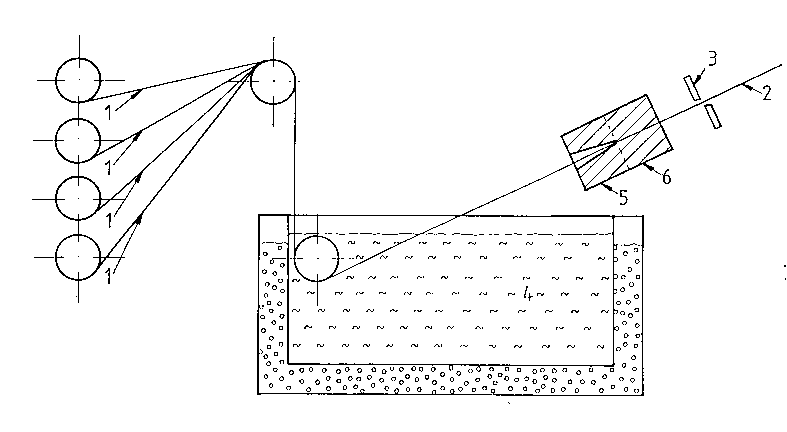Some of the information on this Web page has been provided by external sources. The Government of Canada is not responsible for the accuracy, reliability or currency of the information supplied by external sources. Users wishing to rely upon this information should consult directly with the source of the information. Content provided by external sources is not subject to official languages, privacy and accessibility requirements.
Any discrepancies in the text and image of the Claims and Abstract are due to differing posting times. Text of the Claims and Abstract are posted:
| (12) Patent Application: | (11) CA 2144655 |
|---|---|
| (54) English Title: | PROCESS FOR PRODUCING FIBER COMPOSITE PRECISION CASTINGS |
| (54) French Title: | METHODE DE PRODUCTION DE MOULAGE DE PRECISION A L'AIDE DE COMPOSES DE FIBRE |
| Status: | Deemed Abandoned and Beyond the Period of Reinstatement - Pending Response to Notice of Disregarded Communication |
| (51) International Patent Classification (IPC): |
|
|---|---|
| (72) Inventors : |
|
| (73) Owners : |
|
| (71) Applicants : | |
| (74) Agent: | GOWLING WLG (CANADA) LLP |
| (74) Associate agent: | |
| (45) Issued: | |
| (86) PCT Filing Date: | 1993-09-10 |
| (87) Open to Public Inspection: | 1994-03-31 |
| Examination requested: | 2000-08-22 |
| Availability of licence: | N/A |
| Dedicated to the Public: | N/A |
| (25) Language of filing: | English |
| Patent Cooperation Treaty (PCT): | Yes |
|---|---|
| (86) PCT Filing Number: | PCT/DE1993/000836 |
| (87) International Publication Number: | WO 1994006582 |
| (85) National Entry: | 1995-03-14 |
| (30) Application Priority Data: | ||||||
|---|---|---|---|---|---|---|
|
In a process for producing fiber composite investment castings,
at least one preliminary pattern body, which is then used as
part of a pattern or the pattern itself, is produced with fibers
and a pattern material. A ceramic mold is then formed around the
pattern. The pattern material is then removed and finally, metal
in liquid, liquid-solid or powdery form is introduced into the
mold, wherein the metal is at least partially liquefied in the
mold when it is introduced in powdery form.
This process allows investment castings having an increased
resistance to be produced with a relatively simple casting
equipment.
Note: Claims are shown in the official language in which they were submitted.
Note: Descriptions are shown in the official language in which they were submitted.

2024-08-01:As part of the Next Generation Patents (NGP) transition, the Canadian Patents Database (CPD) now contains a more detailed Event History, which replicates the Event Log of our new back-office solution.
Please note that "Inactive:" events refers to events no longer in use in our new back-office solution.
For a clearer understanding of the status of the application/patent presented on this page, the site Disclaimer , as well as the definitions for Patent , Event History , Maintenance Fee and Payment History should be consulted.
| Description | Date |
|---|---|
| Inactive: IPC from MCD | 2006-03-11 |
| Inactive: IPC from MCD | 2006-03-11 |
| Inactive: IPC from MCD | 2006-03-11 |
| Application Not Reinstated by Deadline | 2003-09-10 |
| Time Limit for Reversal Expired | 2003-09-10 |
| Deemed Abandoned - Failure to Respond to Maintenance Fee Notice | 2002-09-10 |
| Amendment Received - Voluntary Amendment | 2000-12-19 |
| Inactive: Status info is complete as of Log entry date | 2000-09-08 |
| Inactive: Application prosecuted on TS as of Log entry date | 2000-09-08 |
| Letter Sent | 2000-09-08 |
| Letter Sent | 2000-08-23 |
| Request for Examination Requirements Determined Compliant | 2000-08-22 |
| All Requirements for Examination Determined Compliant | 2000-08-22 |
| Letter Sent | 1999-09-14 |
| Reinstatement Requirements Deemed Compliant for All Abandonment Reasons | 1998-11-17 |
| Deemed Abandoned - Failure to Respond to Maintenance Fee Notice | 1998-09-10 |
| Application Published (Open to Public Inspection) | 1994-03-31 |
| Abandonment Date | Reason | Reinstatement Date |
|---|---|---|
| 2002-09-10 | ||
| 1998-09-10 |
The last payment was received on 2000-08-03
Note : If the full payment has not been received on or before the date indicated, a further fee may be required which may be one of the following
Please refer to the CIPO Patent Fees web page to see all current fee amounts.
| Fee Type | Anniversary Year | Due Date | Paid Date |
|---|---|---|---|
| MF (application, 4th anniv.) - small | 04 | 1997-09-10 | 1997-08-19 |
| Reinstatement | 1998-11-17 | ||
| MF (application, 5th anniv.) - small | 05 | 1998-09-10 | 1998-11-17 |
| MF (application, 6th anniv.) - small | 06 | 1999-09-10 | 1999-09-07 |
| MF (application, 8th anniv.) - small | 08 | 2001-09-10 | 1999-10-27 |
| MF (application, 7th anniv.) - small | 07 | 2000-09-11 | 2000-08-03 |
| Request for examination - small | 2000-08-22 |
Note: Records showing the ownership history in alphabetical order.
| Current Owners on Record |
|---|
| MARKUS NOLTE |
| JURGEN SCHADLICH-STUBENRAUCH |
| ERIC NEUSSL |
| Past Owners on Record |
|---|
| None |